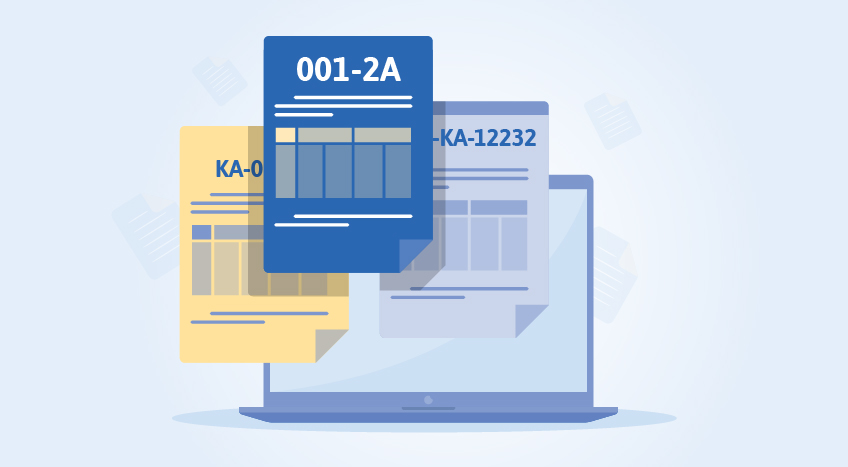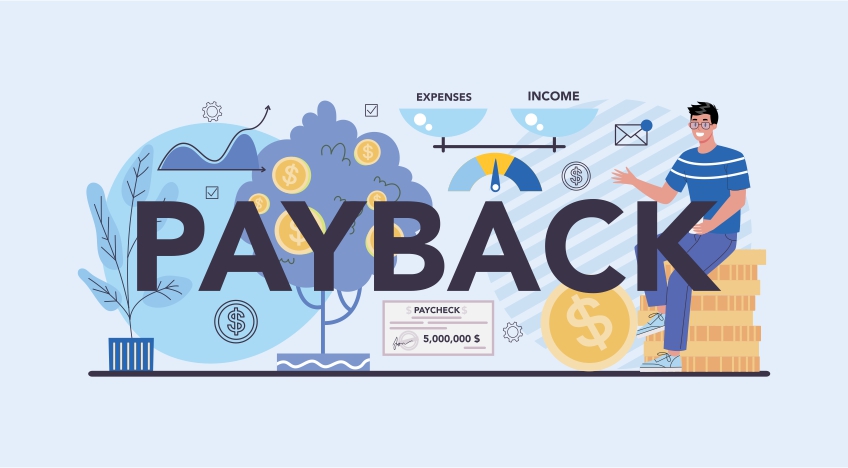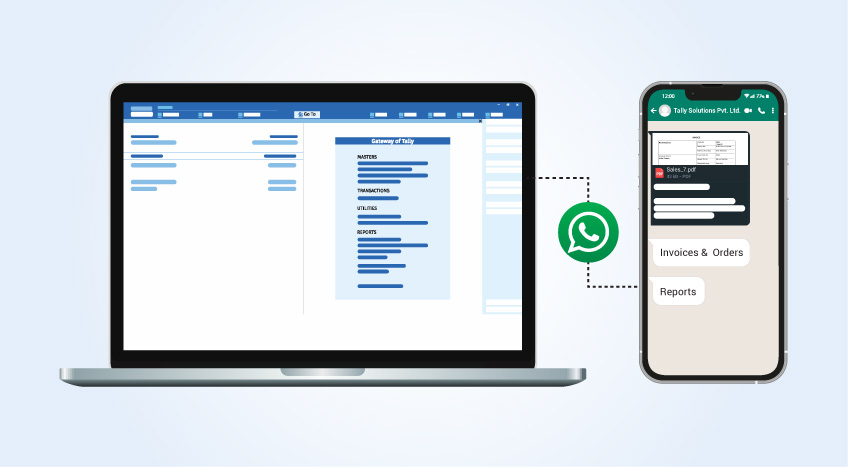SHARE
Tally Solutions | Updated on: October 10, 2023
- What is the payback period?
- The formula for payback period with calculation
- Example of payback period
- Special considerations
- The difference between the payback period and break-even point
- Drawbacks of the payback period
- Quick investment decisions with TallyPrime
When a business invests, the desired outcome is a quick recovery of the investment. The time that investment would take to start returning the money is the payback period. The accurate calculation of the payback period helps the company choose between different investment options. The preferred projects would be the ones that return money quicker after investing. Selecting a suitable investment can be a detailed process where various factors are studied. However, the payback period calculation helps quickly differentiate between projects that give quicker returns and those that are likely to have long-term returns.
|
Business Software for Small Businesses and Start-ups in Indonesia |
How To Classify Accounting For The Ease Of Making Financial Reports |
What is the payback period?
Companies often invest money in projects. The time taken by the project to pay back enough money to recover the initial investment is the payback period. Since the main aim of investing is to generate returns, the payback period is an important metric. Projects that have a shorter payback period are more attractive as investments. Companies usually calculate the payback period when they have more than one potential project to choose from. The payback period also helps in business planning. It is usually calculated by dividing the invested amount by the cash flow. However, the time value of the money is not factored in when calculating the payback period.
The formula for payback period with calculation
Investments are made to earn a profit. It is essential to be able to judge which projects will return the investment quicker. Some investments have a very quick payback period and others take longer. The importance given to the payback period varies based on the investor’s priorities. An investor who needs quicker returns would choose a project with a short payback time. The payback period is important for investors to decide between investing in different projects. It is also useful in financial budgeting and planning to estimate the investment recovery period.
The payback period for a particular project is calculated using the following formula:
Payback Period = Cost of Investment / Average Annual Cash Flow
Which can also be expressed as
Payback Period = (Original Investment - Opening Cumulative Cash Flow) / (Closing Cumulative Cash Flow - Opening Cumulative Cash Flow)
The average cash flow is calculated based on the money that comes into the business and the money that goes out. The payback period can also be used by business owners or homeowners investing in equipment or technology for their offices or homes. They can calculate how much time it takes to recoup their investment in savings because of the investment.
Example of payback period
Another example is an investment of IDR50,000 made by a company in new technology to save them IDR10,000 a year. The time it will take to recoup the investment is $50,000 / $10,000, which is 5 years. On the other hand, if the company invests IDR50,000 in a project that will earn IDR25,000 per year, the company recoups the investment in two years. The first investment saves money and takes a longer time to recover as savings. But, the second investment earns money in a shorter time. So, the second investment is more attractive than the first.
Let us take the example of a homeowner who invests IDR100 in LED bulbs to replace filament bulbs in the home. So, if they save IDR8 a month on electricity bills, it will take a little over a year to recover the money invested. This is a helpful way of determining if the investment will be making up for the initial investment sooner or later. We can use the same logic to evaluate the cost recovery period for new technologies like solar panels or double-glazed windows to reduce utility bills.
Special considerations
The value of money differs over time. Money today has more earning potential than money tomorrow and this is called the time value of money or TVM. Capital budgeting methods consider this difference in value by utilizing net present value (NPV), internal rate of return (IRR), and discounted cash flow but the payback period calculation does not. This is a flaw in the payback period concept. It calculates the number of months or years that it takes to recover the funds and does not consider profitability. So, net present value or NPV is a preferred metric used by investors. However, the payback period is a quick and straightforward method that is one metric among the others that are used to make a completely informed and balanced investment decision.
The difference between the payback period and break-even point
Some people use the terms break-even point and payback period interchangeably. These two terms are similar but not the same. The break-even point is the amount of value that the investment must generate to recover the initial costs. The payback period is the time that it takes to reach the break-even point. So, the break-even point is a certain amount of money while the payback period is a duration of time.
Drawbacks of the payback period
The payback period is a very simple calculation. It does not include profitability, inflation, time value of money, or investments that may have an uneven cash flow. The risk factor involved in the investment is not considered when the payback period is calculated. Risk is significant to consider when making investments. This simplicity makes it easy to calculate but it must not be the only metric that an investor relies on for decision making. Other calculations that factor in all the different elements that affect the investment, such as a discounted payback period, may be unfavorable even when the payback period gives a favorable picture.
However, calculating the payback period is useful when a company facing a cash crunch needs to know how quickly it can recover the money invested. In this case, regardless of other factors, a short-term return is preferable. The payback period is a very quick preliminary analysis that is followed by more detailed calculations for investment options.
Quick investment decisions with TallyPrime
TallyPrime gives you all the metrics and numbers you need to complete a cost and benefit analysis of projects. Having the right tools enables companies to make data-driven decisions on investments.
Read More:
Latest Blogs

5 Must Have Reports Insights in Your Dashboard

Import Data from Excel to TallyPrime

All-New Simplified & Powerful Report Filters in TallyPrime

TallyPrime’s Flexible Voucher Numbering Capabilities for Accurate Recordkeeping





